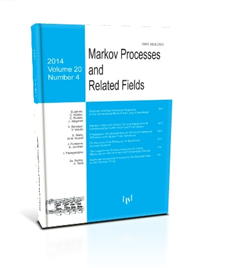Stochastic Geometry and Statistical Mechanics
G.R. Grimmett
2012, v.18, Issue 1, 67-70
ABSTRACT
Stochastic geometry is an established field of mathematics that extends back into the nineteenth century at least, and arguably much earlier. Pioneers sometimes considered elementary problems in paradoxical ways, often deliberately. For example, in order to combat insomnia on the night of 20 January 1884, Charles Dodgson (otherwise known as Lewis Carroll) `proved' that a triangle formed by three random points in the plane is obtuse with probability $(\pi/8)(\pi/3 - \sqrt3/4)$. On being invited to contribute the probability essay in the 9th (1885) edition of Encylopaedia Britannica, Morgan Crofton presented instead a summary of his research on integral geometry. Bertrand's paradox of 1888 about random chords is taught to undergraduates as a cautionary tale, as originally designed by Bertrand in his "Calcul des Probabilites". Bertrand's purpose was to illustrate the now banal point that ambiguity in the probability measure gives birth to ill-posed problems. Stochastic geometry has come a long way since, and is now is a rich and developed topic with many connections to theoretical and applied science. Aspects of stochastic geometry have emerged as key to the study of models of statistical mechanics. A wealth of examples were presented to the large audience at this one-day meeting, ranging from the more probabilistic models of percolation, self-avoiding walks, sandpiles, and exclusion processes, to models for the ferromagnet, and to dynamics for canonical Gibbs states.
COMMENTS
Please log in or register to leave a comment

